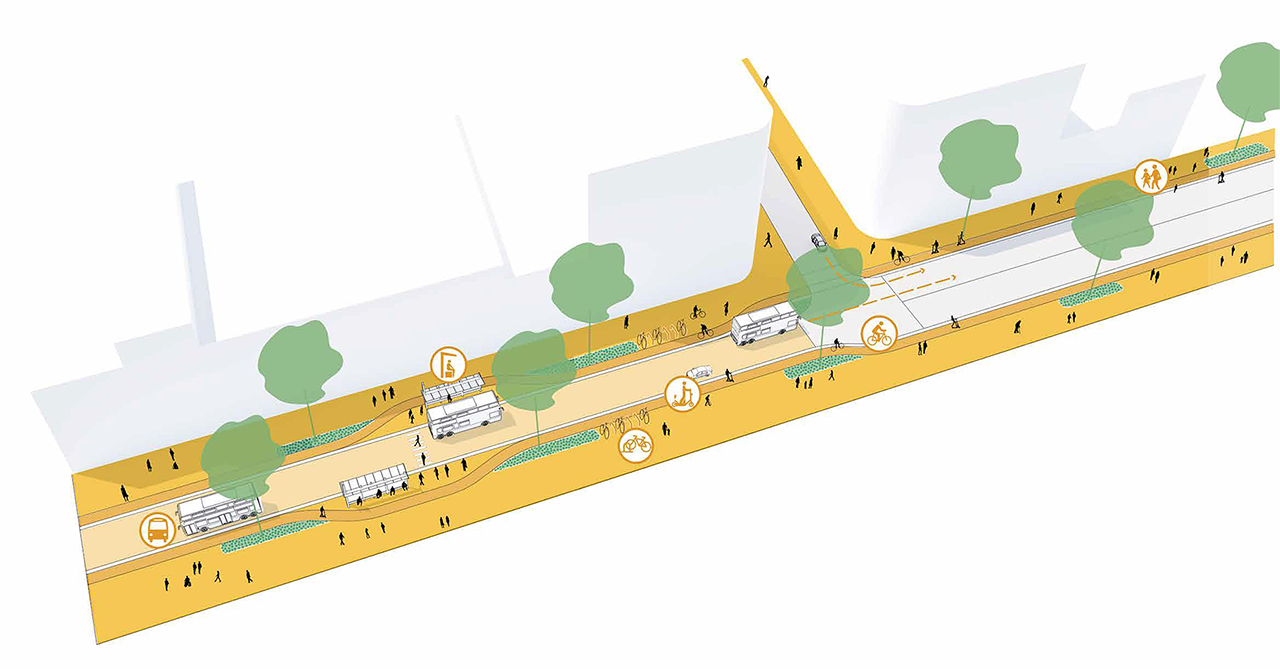Vision for transit oriented development
What we aim to achieve
- Develop bustling hubs centred on rapid transit nodes (City Rail Link, light rail, buses and ferries) at Britomart, Aotea Quarter, Karangahape Road, and Dominion Road Junction and Mt Eden station precincts.
- Create high-quality, highly-accessible public realm connecting public transport passengers with city centre streets.
- Support development of Wynyard Quarter and Quay Park / Te Tōangaroa by delivering major public transport infrastructure.
- Enable the Aotea Quarter to benefit from proximity to new CRL station.
Why we want to do this
Auckland's city centre connectivity is being transformed by rapid transit. The City Rail Link (CRL) stations and proposed light rail transit (LRT) stops will concentrate access and activity along the Waihorotiu / Queen Street Valley, supporting new buildings and enhanced public realm.
The emerging Bus Reference Case identifies the importance of new bus terminals for transport to and within the city centre, especially for busway services. Major capacity increases for ferries are underway at Queens Wharf.
CRL stations at Britomart (downtown), Aotea Quarter (midtown), Karangahape Road (uptown), Mt Eden and Dominion Road Junction (city fringe) will become key development areas.
Station precincts are ideal places to focus development. The investment in public transport can also create great places to live, work and socialise and enable viable, around-the-clock, mixed-use locations, all within 5-10 minutes' walk to the rapid transit network.
Accessible public realm will let people comfortably and safely move around the wider area.
Transit street explained

Transit streets prioritise dedicated centre-running lanes for bus and light rail services with space for wider footpaths, segregated cycle lanes and safe wait zones for passengers.
Transit streets bring people to the area and make it more pleasant to be in it.
Characteristics and benefits of transit streets
- Dedicated transit lanes in centre of street.
- Wider footpaths to create higher capacity and more generous walking environment.
- More space for safe and pleasant waiting zones for passengers using buses.
- Mobility access and local property access allowed.
- Traffic restricted from entering transit street to make additional space to prioritise efficient modes of transport.
- Space for street trees, planting, seating and other place-making elements.
- Space for dedicated/separated cycle lanes for people on bikes and micro-mobility modes.
- Adaptive signal priority to give transit vehicle automatic green light through intersections.
- Bike and scooter parking at transit stops for ease of first/last mile trips.





